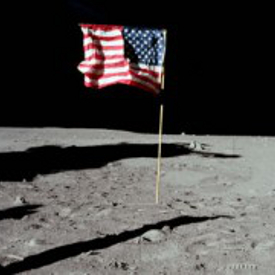
I attended university from 1977 to 1981. I churned out essays with titles like “Unconscious Symbolism in Support of the Osiris-Christ,” “The Puritan Assault on the English Stage,” and “On the Use of Jaguar Imagery in Mayan Ceramics.” Did quite well too. Got good marks. A’s all around.
But the pain! The suffering! I still have my Underwood typewriter which had originally belonged to my father. It dates from the 1940s and is made entirely of metal. No plastic anywhere. Sturdy thing. So the dents in the right side where I pounded my fist in extreme frustration remain mute testimony to my rising panic as deadlines approached.
Sure, if I made a mistake I could haul out a bottle of whiteout and type over the resulting glossy mess, but we students were permitted but two whiteout corrections per page. Any more and the manuscript would be rejected. Consequently it was often necessary to retype an entire page for a clean copy.
Add to this I’ve always been a slow one-finger hunt-and-peck typist, averaging two pages per hour, and you can begin to see how easily the anguish and despair mounted as the hours wound down. I’d often stay up all night typing, cursing and punishing my typewriter with my fist as I consumed not cup after cup, but pot after pot of black coffee. It’s a wonder I’m still alive.
I sure could have used a computer during my university years. Yes sir. Would have kept me sane. Maybe.
I can’t even remember if home computers were available back then. I knew there was a computer department somewhere in the U.B.C. complex. I used to see worried students gravely stepping along with a tall stack of computer punch cards cradled in their hands. Awfully tempting target. They were working to deadlines too, what with computer time parceled out in a miserly fashion. Trip them, scramble their cards, and ruin their careers, nip it in the bud. But I could never be so mean. Nor could I summon the courage to fold, spindle and mutilate even just one card. It would have made the students cry, then go berserk and kill me. Best not to risk it.
But after my 1981 graduation I became attuned to the real world and discovered that more and more professional writers (which I had fond hopes of becoming) were acquiring word processing computers.

I knew nothing about computers. There were no “Idiot’s Guide to” books in those days. Till Peter A. McWilliams released his THE WORD PROCESSING BOOK in 1982. Here was a man after my own ignorant heart. He began with the words:
This book is written for the absolute novice…”
He wrote it for me! Wonderful guy. He covered all bases, and I mean ALL bases, stating:
I will assume that you have some familiarity with a typewriter and television. If not, might I suggest you read The Wonder of the Age: A Machine that Writes Like a Book (Scientific American, June, 1887) and Far-Off Speakers Seen as Well as Heard Here in a Test of Television—Like a Photo Come to Life (New York Times, Page One, April 8, 1927).”
Tongue-in-cheek, of course. His habit of using medieval woodcuts to illustrate his book I found quite endearing. All together a most entertaining book, even if you weren’t interested in the topic.
He devotes an entire chapter explaining what the physical construct of a computer actually IS. First you got your “keyboard”, which is just like your typewriter but with extra keys, and then you got your “video screen” which looks like a television, mainly because it IS a television, being a cathode ray tube and all (watch out for the radiation!). The box with the video screen usually includes a CPU, a sort of electronic brain, about which you don’t need to know anything. Then there’s ROM and RAM, but again, don’t worry about it.
What IS important is your magnetic media to store programs and files. Some computers use cassette tapes, which take forever to load, so forget them. Some use “Winchester hard drives” with wildly spinning aluminum disks. Also not worth worrying about. Too expensive.
What works best are the “floppy disks”, a sort of record made out of magnetic tape encased in cardboard. Two sizes. 5&1/4 inch wide and 8 inch wide. Apparently the possibility exists that once inserted, your computer will refuse to give it back, indeed the floppy will be “eaten” and this will cause a “crash.” But try not to worry about. Will probably never happen, except when it is extremely important that it NOT happen. Oh well.
You need a printer of course. Apparently there were laser printers in 1982, but so mind-bogglingly expensive he refuses to discuss them. It’s all he can do to bring himself to mention their existence.
What IS realistically available are “dot-matrix” printers which produce cruddy manuscripts but don’t cost an arm and a leg, and “Daisy wheel” as-good-as-a-typewriter printers which cost several arms and legs. Either type will let you use proportional spacing, underlining, boldface, kerning and other goodies, providing the actual word processing program you have allows this. Aha! Choosing the right program is as important as choosing the right computer.
McWilliams spends much of the book explaining the merits of word processing. The following quote sold me on the whole idea:
Is making this change that should be made worth retyping the whole document?”
If you own a word processor, you need never face that dilemma again. You will have to face other dilemmas, like how to pay for the word processor perhaps, but you will never face the to-retype-or-not-to-retype dilemma again… Taking words out, putting words in, correcting spelling, removing or adding literally pages of information can take place at any point in the document. The rest of the document adjusts accordingly, automatically, electronically. Change is easy because it’s all done with electrons and electrons love to change.”
THIS is how you write a guide for idiots like me. Simple. Plain. Lucid. A bit nonsensical. Perfect.

Now we come to the nitty gritty. The actual machines.
ATARI 800
The characters generated by Atari are fuzzy and hard to read, the power of the word processing programs limited, and the speed with which commands are executed is very slow.”
Not to be considered.
APPLE II
The Apple II does not come with a video screen. When one is added, the screen display is made up of 24 lines which are but 40 characters in length… The keyboard is not detachable and has but 48 keys, compared with the 80-or-so keys on other computers. The Apple keyboard lacks, among other things, a tab key, up and down cursor keys and a numeric keypad.”
Another non-contender!
TRS-80 III
The major drawback of the TRS-80 III is the built-in video display. The lines are 64 characters long, which is acceptable, but there are only 16 of them on the screen. Beyond that, the clarity and sharpness of the characters are among the worst I have ever seen on any full-size personal computer. (Not as bad as Atari, but still bad.)”
I remember perusing this at Radio Shack. I couldn’t read a blind word on the screen. And it didn’t take floppy disks, cassettes, or any other storage medium. No memory storage at all! (Maybe this was the basic basic version?) On the plus side, I think it was just under $1,000.
Memory is no problem,” said the salesman. “Just leave it running all the time.”
What if there’s a power blackout?”
Then you’re screwed. But it’ll be fun to start over again.”
Nope, not for me.

OSBORNE I
You get a computer with 64K of RAM, video display, two disk drives (92 K capacity per drive), a semi-detachable keyboard with numeric keyboard, a Z-80 microprocessor and enough programs to open your own software store. You get CP/M, WordStar, MailMerge, SuperCalc (an electronic spreadsheet program), and not one but two BASIC programs, MBASIC (Microsoft Basic) and CBASIC.”
The Osborne I, alas, it can be summed up in three words: The Video Display. The built-in video screen has a diagonal measurement that is slightly smaller than five inches.”
Right. I looked at one, I could read the text, but I didn’t like it. Nor did I like the price, $6,000. Had the feeling I was being ripped off. Then I was shown its clone. I forget what it was called, but the screen was even smaller, and the price bigger, a whopping $9,000.
I burst out laughing.
The salesman guffawed. “You’re right, no one in their right mind would buy that thing.”
IBM PERSONAL COMPUTER
I have said more than a few disparaging words about IBM in this book, but truth be told, when it came time to make a personal computer, they did it right. It has been out less than a year and already it is the standard by which all other personal computers are measured.”
The keyboard is excellent. The touch is firm and sure… The screen is sharp and easy to read. It displays 24 lines, eighty characters per line. The monochrome screen is green phosphor… A 64 K system with two 5&1/4 disk drives (160 K per drive), keyboard, and video display would cost $3,575. It is doubtful that you will find or receive a discount on an IBM.”
I’ll say. The Granville street IBM store was demanding in excess of $6,000!
Still, I salivated. State of the art. I remember muttering something like “Hmmm, I guess I’ll have to take out a loan…”
The young salesman tossed his head and stated in an exceedingly smarmy voice “The sort of customers WE are accustomed to dealing with do not REQUIRE any sort of loan for anything, ever.”
I turned around and marched straight out the door, never to return. Screw IBM.
KAYCOMP II AND FRIENDS
McWilliams goes on to describe half a dozen other computers, none of which I remember seeing in local stores.
All in all, he considered IBM the best choice, with the Victor 9000 and the Xerox 820 in competition for second place.
Fortunately, I came across a computer McWilliams never heard of:
THE WORLD FAMOUS “PERSONA” COMPUTER (manufactured by the equally world famous Nelma Data Corporation of Mississauga, Ontario.
It matched the description of the IBM computer. In fact, if you examine the photo of the IBM machine included in this article, it greatly resembles the Persona, almost a clone in fact. How can that be, I wonder?

Best of all, it only cost $3,000, and that included a Daisy wheel printer! Wowzers! What more could I hope for? I snapped it up immediately.
It served me well. I loved that critter. I named it “Zontar” after the movie “ZONTAR, THE THING FROM VENUS.” (1966, AIP-TV.) Good old Zontar.
I particularly enjoyed its WORDSTAR word processing program.
“WordStar is a screen oriented program. What you see on the video screen is exactly the way the text will appear when printed, word for word, line for line, page for page.”
Some programs of the era did not do this. PeachText, for instance “has no relation to what will be printed on paper… there is no way of knowing where pages will break without a test print-out.” A program like that would have driven me nuts.
I used Zontar to write my first unpublishable novel. And several unpublishable short stories.
After five years of faithful service Zontar died. I kept it on a small table for an additional five years. Couldn’t bear to throw it away. Eventually I did.
Since then I have used a variety of Apples and PCs. But Zontar was my first love and remains forever in my heart.










